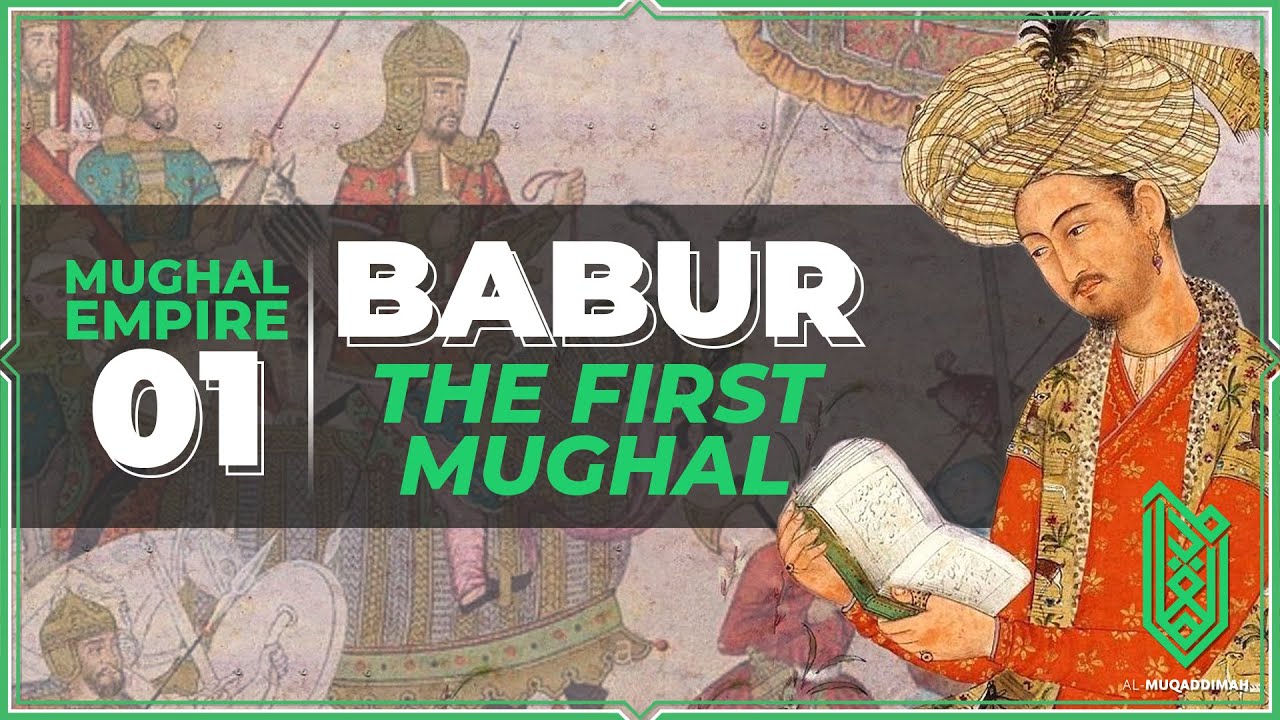The History of the Mughal Empire | 1526CE - 1857CE | Al Muqaddimah
Summary
TLDRThe video explores the rise and legacy of the Mughal Dynasty in India, highlighting its Muslim majority origins and significant historical figures like Babur, Akbar, and Aurangzeb. It discusses key events such as the establishment of a bureaucratic system, cultural integration, and the empire's expansion and decline. The Mughals are recognized for their contributions to art and architecture, notably the Taj Mahal. The video also reflects on the enduring impact of Mughal rule on the subcontinent, particularly in the spread of Islam and the development of Urdu, while addressing the eventual fall of the dynasty and British colonialism.
Takeaways
- 🇮🇳 The Mughal Dynasty is central to the Muslim heritage in South Asia, influencing both Pakistan and Bangladesh.
- 📺 Magellan TV offers a variety of documentaries on history and science, including notable recommendations about British dealings in the Middle East and Iran's history.
- 🏰 The Mughals, descending from Tamerlane and Genghis Khan, established their empire in India after Babur's victory over the Lodi Dynasty in 1526.
- 👑 Akbar, Babur's grandson, expanded the Mughal Empire significantly while attempting to reconcile Islamic teachings with Indian religions.
- 🕌 Akbar created the Din-I Ilahi, a syncretic religion aiming to unite various faiths, though it faced opposition from orthodox Muslims.
- 🚧 The Mansabdari system, established by Akbar, organized the empire's administration by assigning military responsibilities to officials known as Mansabdars.
- ⚔️ Aurangzeb, Akbar's successor, expanded the empire further but implemented strict Islamic policies that led to increased resistance from various groups.
- 🔄 The Mughal Empire faced internal strife after Aurangzeb's death in 1707, leading to civil wars and a power vacuum.
- 💔 The empire significantly weakened after Nadir Shah's invasion in 1739, culminating in the rise of the Maratha Empire and British influence.
- 🕌 The cultural legacy of the Mughals, including architecture and the Urdu language, continues to shape South Asian identity and heritage.
Q & A
What significant impact did the Mughal Dynasty have on the Subcontinent of India?
-The Mughal Dynasty played a crucial role in the spread of Islam across the Subcontinent, as well as influencing culture, architecture, and trade.
Who was Babur and what did he achieve?
-Babur was a Timurid prince who founded the Mughal Empire in India after defeating the Lodi Dynasty at the Battle of Panipat in 1526.
What were the key features of Akbar's reign?
-Akbar is known for his efforts to reconcile Islam with various Indian religions, promoting a syncretic faith called Din-I Ilahi, abolishing the Jizya tax, and translating the Mahabharata into Persian.
How did Humayun's leadership differ from Babur's?
-Humayun struggled with leadership and was defeated by Sher Shah Suri, resulting in a period of homelessness for him, while Babur was a successful conqueror who established the empire.
What was the Mansabdari System and its significance?
-The Mansabdari System was a bureaucratic structure introduced by the Mughals where officials (Mansabdars) were responsible for providing troops and were rewarded with tax rights, ensuring loyalty to the emperor.
What challenges did the Mughal Empire face during Aurangzeb's reign?
-Aurangzeb faced increasing power from the Zamindars and Mansabdars, the depletion of the empire's treasury due to continuous military campaigns, and growing resistance in the Deccan region.
What event marked the decline of the Mughal Empire?
-The decline of the Mughal Empire was marked by Nadir Shah's invasion in 1739, followed by the Marathas taking control of Delhi in 1757, and ultimately, the British colonization which began in 1757.
What was the cultural legacy of the Mughal Empire?
-The Mughal Empire left a rich cultural legacy, including architecture like the Taj Mahal, the development of the Urdu language, and the merging of Turko-Persian culture with local traditions.
Who succeeded Shah Jahan and what were the circumstances of his rule?
-Shah Jahan was succeeded by his son Aurangzeb, who focused on expanding the empire but faced significant challenges due to his conservative policies and constant military campaigns.
How did the Mughals impact trade in India?
-The Mughal Empire unified North India under one rule, which facilitated trade and commerce across the region, enhancing economic stability and growth.
Outlines

Esta sección está disponible solo para usuarios con suscripción. Por favor, mejora tu plan para acceder a esta parte.
Mejorar ahoraMindmap

Esta sección está disponible solo para usuarios con suscripción. Por favor, mejora tu plan para acceder a esta parte.
Mejorar ahoraKeywords

Esta sección está disponible solo para usuarios con suscripción. Por favor, mejora tu plan para acceder a esta parte.
Mejorar ahoraHighlights

Esta sección está disponible solo para usuarios con suscripción. Por favor, mejora tu plan para acceder a esta parte.
Mejorar ahoraTranscripts

Esta sección está disponible solo para usuarios con suscripción. Por favor, mejora tu plan para acceder a esta parte.
Mejorar ahoraVer Más Videos Relacionados

DAULAH MUGHAL!! Sejarah Peradaban Daulah Islam Di India

Sejarah Islam di Anak Benua India

Bagian 1 ~ Peradaban Islam Pada Masa Daulah Mughal Di India

Mughal rule in India | 1450 - Present | World History | Khan Academy

Babur, the Founder of the Mughal Empire | 1483CE - 1530CE | Al Muqaddimah

The Mughal Empire and Historical Reputation: Crash Course World History #217
5.0 / 5 (0 votes)
